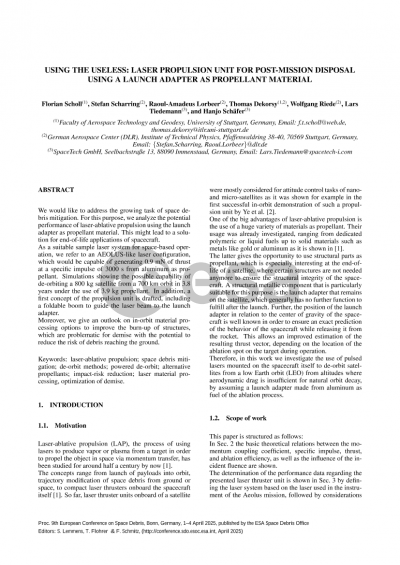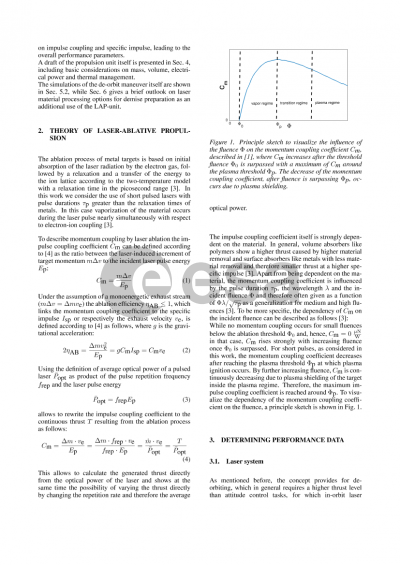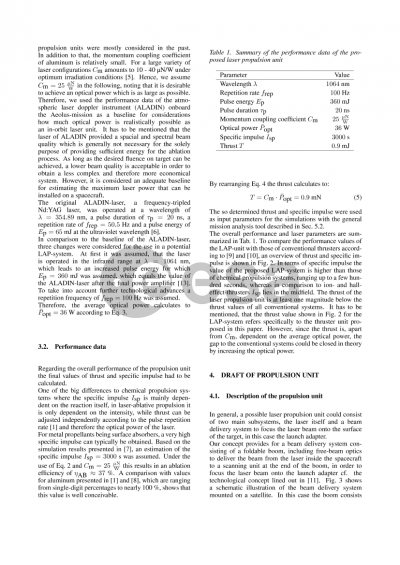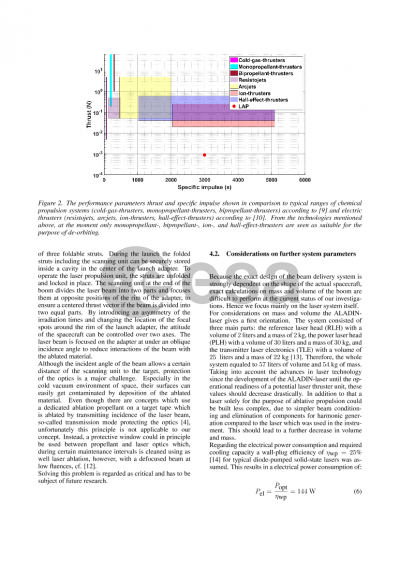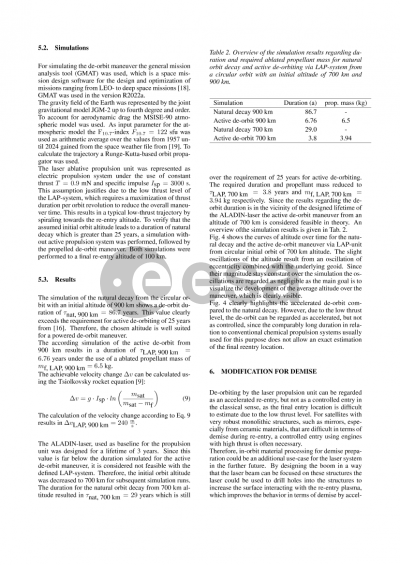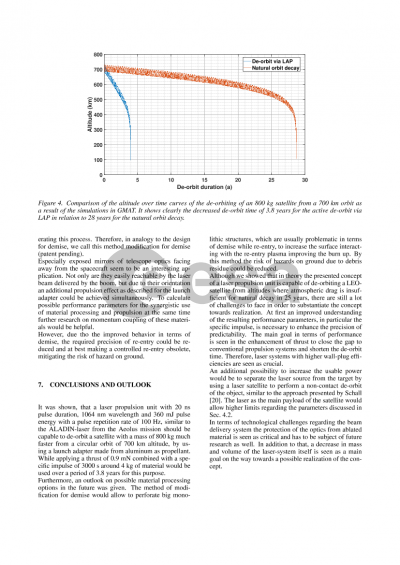Document details

Abstract
To address the growing task of space debris mitigation, we analyze the potential performance of laser-ablative propulsion using the launch adapter as propellant material, which might lead to a solution for end-of-life applications of spacecraft, while adding value to the overall mission. This de-orbiting approach is of particular interest for satellite missions flying at altitudes where atmospheric drag is insufficient for natural orbit decay.
As a suitable sample laser system for space-based operation, we refer to an AEOLUS-like laser configuration, space-proven in long-term operations over several years, at 20 ns pulse length, 1064 nm wavelength and 360 mJ pulse energy with a pulse repetition rate of 50 Hz. Anticipating further technological advances a repetition frequency of 100 Hz is assumed. The emitted laser beam would be guided by an optical mirror system to a boom that is placed in the center of the launch adapter. For laser thruster operation, the boom, exhibiting a scanning unit which is placed at its end, is unfolded. The scanning unit is used to divide the laser beam into two equal parts that are focused onto opposite positions of the launch adapter’s rim. Using recoil from laser ablation due to surface material vaporization during the laser pulse, the momenta induced at both positions add up to a net momentum effective on the symmetry axis of the satellite. By introducing an asymmetry of the irradiation times, the attitude of the spacecraft can be controlled with high precision as well.
To assess the thruster performance, we review the figures of merit for laser-ablative propulsion using aluminum as a propellant material deriving an impulse coupling coefficient of 25 N/MW and a specific impulse of 3000 s.
As a preliminary estimate we find that for a small satellite with 800 kg mass, comprising a launch adapter of <10 kg, serving as ablation propellant, an overall Delta-v of approximately 440 m/s can be achieved after ablation of 6 kg adapter material. In a dedicated simulation with the general mission analysis tool (GMAT) we show that the laser/launch adapter propulsion unit providing low (0.9 mN) but continuous thrust should be capable to de-orbit this satellite from an altitude of 700 km within 3.5 years, using 3.4 kg of adapter material as propellant.
A first concept of a possible laser/launch adapter propulsion unit is drafted, including basic considerations on size, weight, power consumption, and thermal management, highlighting the versatility of “omnivore” laser-ablative propulsion to utilize structural components of the satellite for thrust generation.
Moreover, we give an outlook on laser material processing options for demise preparation. Big monolithic structures, such as mirrors, especially from ceramic materials, are problematic for demise and often require controlled re-entry. Here, the propulsion laser could be used to drill channels into these structures to increase the surface interacting directly with the re-entry plasma, leading to a faster demise. Thereby, the risk of debris reaching the ground could be reduced making at best controlled re-entry obsolete.
In summary, we present not only a potential possibility of powered de-orbit maneuvers by a new propulsion system, but also discuss the synergetic potential of the laser propulsion system to extend post-mission disposal by laser material processing of satellite structures in orbit, which so far cannot be optimized on ground by design for demise methods.
Preview
